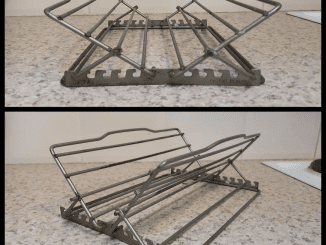If you’re someone who enjoys puzzles, logic challenges, or math brain teasers that push your thinking to the next level, then this one’s for you. A simple grid of numbers—at first glance—seems easy enough. But right there in the bottom-left corner is a red question mark staring you down, daring you to find the missing number. The question is simple: What number should go there?
Take a moment before reading on. Look carefully at the pattern. Can you find the connection?
Why This Puzzle Tricks So Many People

Puzzles like this one are deceptively simple. They don’t come with a wall of text or complex formulas. Just a 3×3 grid of numbers that quietly challenges your brain. The most common mistake people make is assuming it’s about either rows or columns, not both. Another mistake is looking for big math operations like factorials or square roots when the solution is actually rooted in something more basic—pattern recognition.
We often overlook the most obvious hints because our brains love to overthink.
Let’s Solve This Together Step-by-Step
Here are the numbers we’re working with, reading row by row:
First row: 2, 6, 18
Second row: 4, 20, 100
Third row: ?, 21, 147
Your goal is to find the missing number where the question mark is.
Let’s begin with the rows.
In the first row:
2 multiplied by 3 equals 6
6 multiplied by 3 equals 18
So, the pattern is: multiply by 3 from left to right
In the second row:
4 multiplied by 5 equals 20
20 multiplied by 5 equals 100
So here, the multiplier is 5 instead of 3
Video : What Number Can be Represented by the ?
Let’s check the third row using the same logic.
If the middle number is 21 and the last number is 147, let’s check what happens when you multiply:
21 multiplied by 7 equals 147
So to get to 21, you must have multiplied something by 7
That means the first number in the row is 3
Because 3 multiplied by 7 equals 21, and 21 multiplied by 7 equals 147
Boom. The missing number is 3.
Understanding the Pattern: Why 3 Makes Perfect Sense
This puzzle is a brilliant example of sequential logic. Each row has its own unique multiplier:
First row uses ×3
Second row uses ×5
Third row uses ×7
So the rows are progressing with odd-number multipliers—3, 5, and 7. The key to unlocking this puzzle is spotting that pattern in the sequence of operations, not just in the numbers themselves.
It’s clean, elegant, and sneaky enough to make most people overthink.
What Makes This Puzzle So Addictive?
It’s short and snappy. No fluff. Just a challenge that hooks your brain and makes you want to solve it before anyone else. It’s competitive. It’s satisfying. And most importantly—it feels like a win when you get it right.
That emotional payoff is why puzzles like this spread like wildfire. The simplicity draws you in, but the clever twist keeps you thinking.
Video : Trending Puzzle
Did You Solve It? Let’s Hear Your Thoughts
If you figured out the answer was 3, you’re ahead of the game. Now it’s your turn to engage others.
Drop a comment and tell us:
Did you get the answer right?
How long did it take you?
Did you try a completely different approach first?
And don’t forget to share the puzzle with your friends. Let’s see who among your circle has the sharpest logic skills.
Conclusion: Don’t Stop Challenging Your Brain
Solving puzzles like this doesn’t just make you feel smart—it actually trains your brain to think more clearly and logically. Every puzzle you solve adds a new layer to how you approach problems in everyday life. So whether you nailed this one or struggled with it, the key is to keep going.
Keep exploring, keep solving, and most of all—keep having fun. Because sometimes, the most brilliant answers hide behind the smallest question marks.


